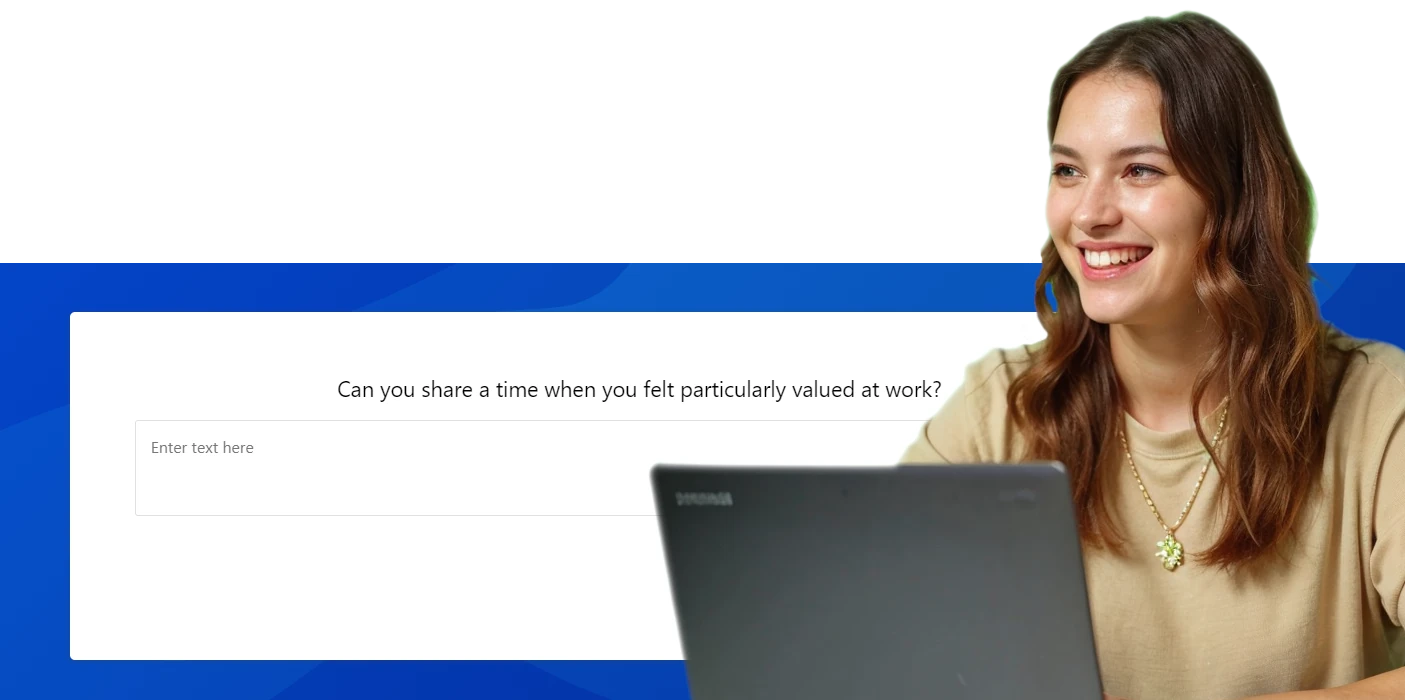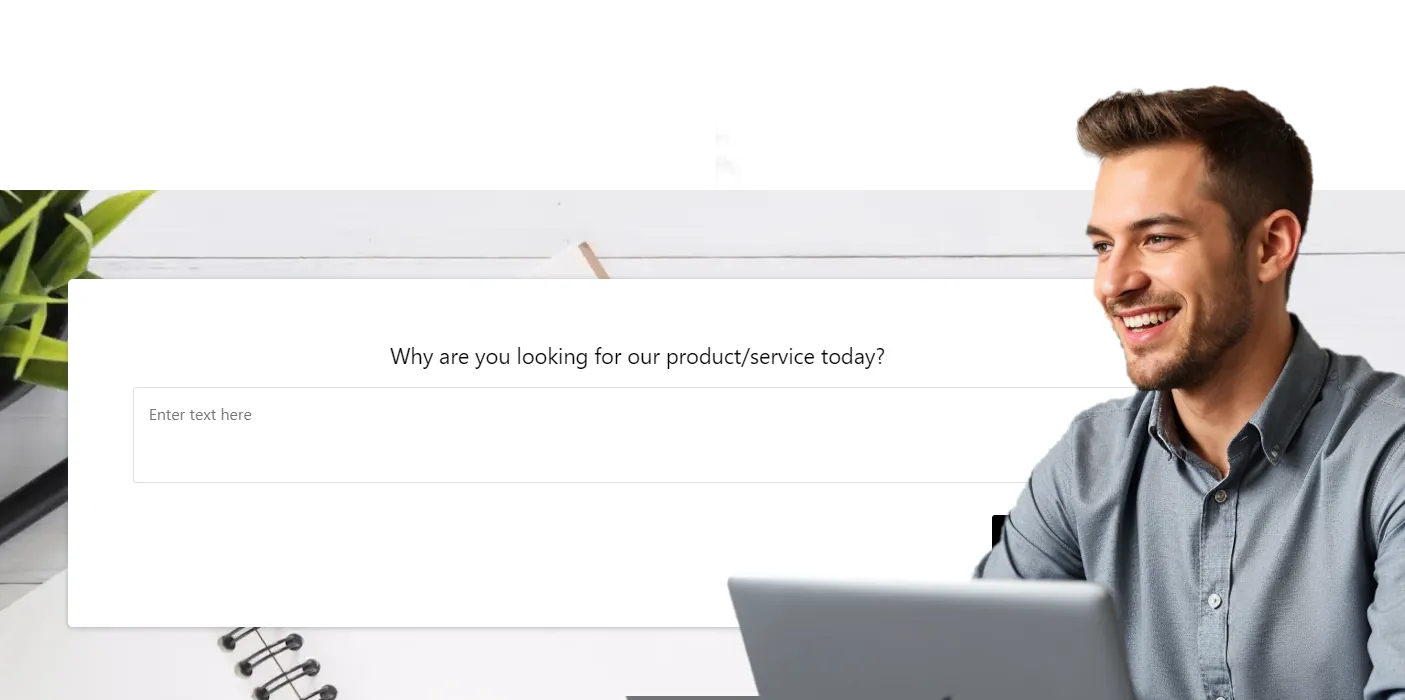Open-Ended Questions: Unleashing the Power of Insight
Master the Art of Asking the Right Questions
In this article
- What Are Open-Ended Questions?
- Why Use Open-Ended Questions?
- How to Create Effective Open-Ended Questions
- Examples of Open-Ended Questions
- Frequently Asked Questions

Open-Ended vs. Closed-Ended Questions: What's the Real Difference?
Every great conversation, survey, or research project starts with a question. But not all questions are created equal. The way you frame your questions can significantly impact the quality and type of insights you gather. That's where the distinction between open-ended and closed-ended questions comes into play.
Open-ended questions are like open doors - they invite your respondents to step through and share their thoughts, feelings, and experiences in their own words. These questions can't be answered with a simple 'yes' or 'no' but require elaboration, allowing you to dive deeper into the psyche of your customers. By analyzing these responses, you gain a wealth of qualitative data that reveals the context, motivations, and nuances behind your customers' opinions.
For instance, if you ask, "What influenced your decision to choose our product?" you're not just getting a data point - you're uncovering the thought process, emotions, and unique experiences that guided that decision. Such insights are gold when it comes to improving your offerings, enhancing customer experience, and tailoring your marketing strategies.
Closed-ended questions, on the other hand, are the backbone of quantitative research. These questions limit responses to predefined options - like multiple-choice answers, yes/no choices, or rating scales. They're efficient, easy to analyze, and perfect for identifying trends and patterns at scale. However, while they tell you 'what' your customers think, they don't always explain the 'why'.
A classic example of a closed-ended question is the Net Promoter Score (NPS) survey: "On a scale from 0 to 10, how likely are you to recommend our product?" This question provides a quick snapshot of customer sentiment, which you can easily track over time to measure the effectiveness of your customer engagement strategies.
But what if you want to understand the reasons behind the scores? That's where you would pivot to an open-ended follow-up question, like "What's the main reason for your score?" - a powerful combination of both types of questions that gives you the best of both worlds.
Comparing Open-Ended and Closed-Ended Questions
To help you better understand when and how to use these questions, let's compare them side by side:
| Closed-Ended Questions | Open-Ended Questions |
|---|---|
| Would you recommend our product/service? | What were the main reasons you chose our product/service? |
| Did you experience good customer service? | How did you feel about our customer service? |
| Would you consider using our product/service again? | What would make you use our product/service again? |
| Did you like our product/service? | What is the most important feature of our product/service for you? |
| Are you interested in buying our product/service today? | Why are you looking for our product/service today? |
| Are you happy with your experience with us? | How would you describe your experience with us? |
| Did you find what you were looking for today? | How can we help you find what you are looking for today? |
As you can see, closed-ended questions are ideal for quickly gathering specific data points, while open-ended questions provide richer, more detailed insights that help you understand the bigger picture. By strategically combining both types, you can create a well-rounded survey or research tool that captures both the quantitative and qualitative data you need to drive informed decisions.
Why Use Open-Ended Questions?
Open-ended questions are more than just a method of data collection; they are a powerful tool for fostering engagement, eliciting rich insights, and driving meaningful change. By allowing respondents to express their thoughts freely, these questions unlock the depth of understanding needed to make informed decisions and inspire innovation. Here's why they should be at the core of your survey strategy:
-
Reveal Deeper InsightsWhile close-ended questions offer straightforward data, open-ended questions provide context. They capture the motivations, emotions, and complexities behind respondents' answers, offering a nuanced understanding that is essential for comprehensive analysis. This depth is invaluable for grasping the "why" behind the "what." Learn more about uncovering insights.
-
Boost Engagement and TrustRespondents feel valued when they are given the opportunity to express their thoughts fully. This engagement leads to more thoughtful feedback and a stronger relationship between you and your audience. By showing that you value their opinions beyond simple metrics, you build trust and encourage more candid responses. Explore how engagement enhances feedback.
-
Capture the Complexity of ResponsesLife is nuanced, and so are your respondents' experiences. Open-ended questions allow you to capture these subtleties, offering a fuller picture that close-ended questions might miss. This approach helps you understand the diverse perspectives and unexpected insights that are crucial for well-rounded decision-making. See how to embrace full-spectrum responses.
-
Drive Innovation and GrowthOpen-ended questions not only collect data but also spark creativity. By allowing respondents to share their ideas and experiences freely, you open the door to innovative solutions and fresh perspectives that can drive your business forward. Often, the most groundbreaking ideas come from listening closely to what your audience has to say. Discover how open-ended questions can fuel innovation.
-
Uncover Unseen OpportunitiesOpen-ended questions can reveal opportunities and challenges that you might not have considered. By exploring these insights, you can identify gaps in your offerings, understand emerging trends, and position your business to meet evolving customer needs. This proactive approach ensures you stay ahead in a competitive landscape. Learn more about seizing new opportunities.

How to Create Effective Open-Ended Questions
Crafting effective open-ended questions is both an art and a science. Done correctly, they can unlock profound insights that drive action. Done poorly, they can lead to confusion or incomplete answers. Here's how to ensure your open-ended questions deliver the results you need:
-
Be Clear and ConciseClarity is essential. Avoid jargon and keep your questions straightforward. A clear question leads to a clear answer. For example, instead of asking, "What do you think about our product's usability features?" ask, "How easy is it to use our product?" This approach helps respondents provide precise, actionable feedback.
-
Focus on Experiences and EmotionsTap into the emotional and experiential aspects of your respondents' lives. Questions like, "Can you describe a time when our product made a difference in your day?" or "How did using our service make you feel?" often yield richer, more actionable insights that go beyond surface-level feedback.
-
Encourage Detailed ResponsesInvite respondents to share their stories. Questions like, "Can you share an experience where our service exceeded your expectations?" or "What challenges did you face when using our product?" not only gather useful data but also help you understand the context and impact of your offerings on your customers.
-
Keep It Truly OpenAvoid leading your respondents. Ensure your questions are genuinely open by steering clear of phrases like "Wouldn't you agree that...?" Instead, ask, "What are your thoughts on...?" This invites honest, uninfluenced feedback, giving you a more authentic view of your respondents' opinions.
Examples of Open-Ended Questions
Looking to elevate your customer interactions and gather valuable insights? Here are some expertly crafted examples of open-ended questions that will help you connect with your audience on a deeper level:
Customer Feedback
| Question | Use Case |
|---|---|
| What do you like most about our product/service? | This question invites customers to share what they value the most, giving you direct insight into your strengths from the user's perspective. |
| How can we improve your experience? | Encourages customers to identify areas for improvement, providing actionable feedback that can lead to meaningful enhancements in your offerings. |
| Can you describe a memorable experience you had with our brand? | Promotes storytelling, which can reveal emotional connections, brand loyalty, and the specific moments that make your brand stand out. |
| What would you change about our product/service? | Gives customers the freedom to suggest improvements, helping you identify potential pain points and areas for development. |
| What problem does our product/service solve for you? | Helps you understand the core value your product provides, which is essential for refining your marketing messages and product development strategies. |
Employee Engagement
| Question | Use Case |
|---|---|
| What motivates you to do your best work? | Uncovers the key drivers of employee performance, allowing you to create a more motivating and supportive work environment. |
| How can we better support your career growth? | Provides insight into the professional development needs of your team, enabling you to tailor growth opportunities effectively. |
| Can you share a time when you felt particularly valued at work? | Encourages reflection on positive experiences, offering clues on how to replicate and enhance workplace satisfaction. |
| What changes would improve our workplace culture? | Invites employees to suggest ways to enhance the work environment, promoting a culture of continuous improvement. |
| How do you see your role evolving in the next year? | Gathers forward-looking insights that can help you align your team's goals with the company's strategic direction. |
Market Research
| Question | Use Case |
|---|---|
| What challenges are you currently facing in your industry? | Identifies the pain points your product or service could address, providing opportunities for strategic market positioning. |
| How do you see the future of your industry evolving? | Encourages respondents to share their predictions, which can inform your strategic planning and innovation efforts. |
| Can you describe an unmet need that you have in your business? | Uncovers potential gaps in the market, offering insights into new product development or service opportunities. |
| What features do you look for when choosing a product/service in our industry? | Helps you identify the key decision-making factors that influence your target market, guiding product enhancements and marketing strategies. |
| What trends do you think will shape our industry in the next 5 years? | Provides valuable foresight into future market dynamics, helping you stay ahead of the curve. |
Website & User Experience
| Question | Use Case |
|---|---|
| How can we make this page better? | Invites users to suggest improvements for specific pages, helping you enhance the user experience based on direct feedback. |
| What is stopping you from completing your purchase today? | Helps identify barriers to conversion, allowing you to address specific issues that may be hindering sales. |
| What are your main concerns about our product/service? | Uncovers potential objections or worries, providing you with the insights needed to refine your messaging and product features. |
| What persuaded you to take action today? | Gathers insights into the triggers that lead to conversions, helping you emphasize these factors in your marketing efforts. |
| Where did you first hear about us? | Provides valuable information about your most effective marketing channels, helping you optimize your outreach strategies. |